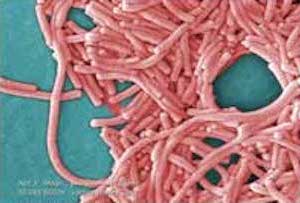In the summer of 2015, one of the United States’ most serious metropolitan outbreaks of Legionnaires’ disease occurred in Bronx, NY, drawing worldwide attention to the gravity of this potentially deadly – but preventable – illness. This initial outbreak killed 12 people and sickened more than 120; a second outbreak in September killed 1 and made 15 ill.
Legionnaires’ disease, which causes severe pneumonia, is spread by breathing in water mist contaminated with Legionella bacteria. The contaminated water comes from sources such as cooling towers, hot tubs, decorative fountains, humidifiers, and produce misters. Fatality rates for those who contracted Legionella pneumonia generally range from 5% to 30%.
What was particularly sobering about the two Bronx outbreaks was that they occurred across five zip codes in the South Bronx (an area of about 5 square miles). This area supports a population of approximately 284,633 people.
The Opera House Hotel was at the epicenter of the confirmed cases. After initial reports of confirmed cases of LD began to be reported, the New York City Department of Health and Mental Hygiene (DHMH), initiated an investigation on July 20th. Sampling of suspected cooling towers began on July 28th; on July 30th, the Opera House Hotel tested positive for the same strain of Legionella that had sickened people across the South Bronx. The Opera House Hotel was officially identified as the source of the deadly outbreak on August 20th.
The people of South Bronx – particularly those with risk factors including smoking, diabetes, lung disease, and suppressed immune systems – were particularly susceptible to the Legionella virus – a fact noted by epidemiologists a year before the outbreak. In a 2014 study, NYC Department of Health researchers warned that socioeconomic factors can contribute to LD occurrence, concluding that in high-poverty neighborhoods, like the South Bronx, “greater effort may be warranted, for example on the upkeep of cooling towers and water systems in the buildings in these areas.”1

When Legionella bacteria is aerosolized by inadequately maintained cooling towers, like that of the Opera House Hotel, it can travel as far as 4.5 miles (as proven by a scientific study published in The Journal of Infectious Diseases).2 Hot summer weather conditions not only increase use of cooling towers, but also enable Legionella bacteria to proliferate. Combine these factors with a poor population where health conditions like asthma and heart disease are rampant, and you have the perfect breeding ground for an epidemic.
Since the outbreak, the state of New York has implemented forceful measures to prevent and / or control future epidemics. Henceforth, building owners will be required to inspect their cooling systems every 3 months during the summer. They are also required to implement a regular maintenance plan by March 1, 2016, patterned after section 7.2 of ANSI / ASHRAE 188-2015 (“Legionellosis: Risk Management for Building Water“), subject to final approval on June 26, 2015.
Sources:
1. “Legionnaires’ Disease Incidence and Risk Factors, New York, New York, USA, 2002-2011.” Emerg. Infect. Dis. 2014 Nov; 20(11): 1795-1802.
2. Nguyen TM, Ilef D, Jarraud S, et al. (January 2006). “A community-wide outbreak of legionnaires disease linked to industrial cooling towers–how far can contaminated aerosols spread?” The Journal of Infectious Diseases 193 (1): 102–11.doi:10.1086/498575. PMID 16323138.
